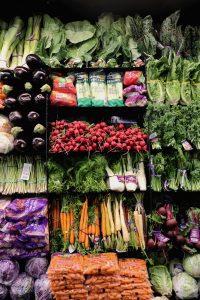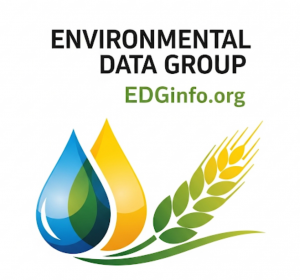Unclean Water and Produce Safety
The Negative Impact of Unclean Water on Vegetables
Water is essential for crop production, used for irrigation, washing, and cooling. However, if this water is contaminated, it can introduce a range of hazards to produce:
Microbial Contamination: Unclean water can harbor pathogenic microorganisms, including bacteria like Salmonella and Listeria monocytogenes, as well as E. coli O157:H7 and Cryptosporidium parvum. When contaminated water comes into direct contact with fruits and vegetables, these pathogens can transfer to the produce. This risk is particularly high for leafy greens, melons, tomatoes, and cucumbers. (ASM Journals, ontario.ca)
Chemical Contamination: Beyond microbes, contaminated water can introduce harmful chemicals, pesticides, and other pollutants into plants. These contaminants can be absorbed by the plant and pose a health hazard to consumers. (Triangle Gardener Magazine, Olympian Water Testing)
Reduced Plant Health and Yield: Poor water quality can directly impact the health of the plants themselves, leading to stunted growth, reduced nutritional value, leaf discoloration, and lower yields. High concentrations of salts, manganese, iron, and fluoride in water can also be toxic to vegetables. (Triangle Gardener Magazine, Olympian Water Testing)
Organic vs. Conventional Vegetables and Water Contamination
While organic produce is often sought for its reduced exposure to synthetic pesticides and fertilizers, it is not inherently immune to contamination from unclean water. Both organic and conventional farming practices face similar challenges regarding water safety:
Irrigation Water Sources: Both types of farms may draw water from similar sources, such as rivers, ponds, or wells, which can be susceptible to contamination from livestock or wildlife feces, manure runoff, faulty septic systems, and storm runoff. (ontario.ca, ASM Journals)
Post-Harvest Contamination: Even if produce is grown with clean water, improper washing or handling with contaminated water after harvest can introduce pathogens. Washing organic produce in unfiltered tap water, for instance, can negate the benefits of choosing organic by reintroducing contaminants. (EPA Water)
Organic Regulations and Water: While organic certifying agencies have guidelines for water use, they often focus on preventing contamination from prohibited substances (like synthetic chemicals). However, the fundamental biological risks from contaminated water apply equally. The FDA’s Produce Safety Rule, which applies to many produce farms regardless of organic status, includes provisions for agricultural water assessments and corrective measures to address contamination risks. (eCFR, UCANR)
Upsurge in Listeria and Salmonella and the Water Connection
Recent years have seen a concerning number of Listeria and Salmonella outbreaks, and contaminated produce, often linked to irrigation water, has been implicated in many cases.
Listeria Outbreaks: Listeria monocytogenes is commonly found in soil and water. Vegetables can become contaminated directly from the soil or from manure used as fertilizer. Recent outbreaks of listeriosis have been linked to various food products, including cantaloupes, deli meats, and pre-packaged salads. While some outbreaks are tied to post-processing contamination, initial contamination from the growing environment, including water, is a significant pathway. (Mayo Clinic, Pritzker Hageman, Wikipedia)
Salmonella Outbreaks: Salmonella contamination in vegetables can occur at all stages of production, from cultivation and harvesting to washing, cutting, packaging, and transportation. Contaminated soil and water used for irrigation or spraying are well-documented sources of Salmonella in produce. Leafy vegetables and tomatoes, in particular, have been identified as frequent carriers of Salmonella. (Annals of Agricultural and Environmental Medicine, NEMIS Technologies) Recent large Salmonella outbreaks, such as those linked to raw milk, highlight the persistent risk of bacterial contamination in food supply chains. (CIDRAP, Live Science)
The Connection: Studies have explicitly linked the presence of Salmonella enterica and Listeria monocytogenes in alternative irrigation waters (rivers, ponds, and reclaimed water) to the potential contamination of fruits and vegetables. Detecting these pathogens in irrigation water is crucial for implementing interventions and management strategies to reduce the risk of foodborne illness associated with fresh produce. (ASM Journals) The increasing demand for fresh and minimally processed produce, coupled with complex supply chains, may also contribute to the challenges of controlling these outbreaks.
Conclusion
The purity of water used in agriculture is paramount for food safety. Unclean water poses a direct threat to both regular and organic vegetables, acting as a conduit for harmful pathogens like Listeria and Salmonella. The upsurge in foodborne illnesses in recent years underscores the critical need for robust water quality monitoring, effective agricultural practices, and stringent food safety regulations throughout the entire food production chain, from farm to table. Addressing water contamination is a fundamental step in preventing future outbreaks and ensuring the safety of the produce consumers rely on.


